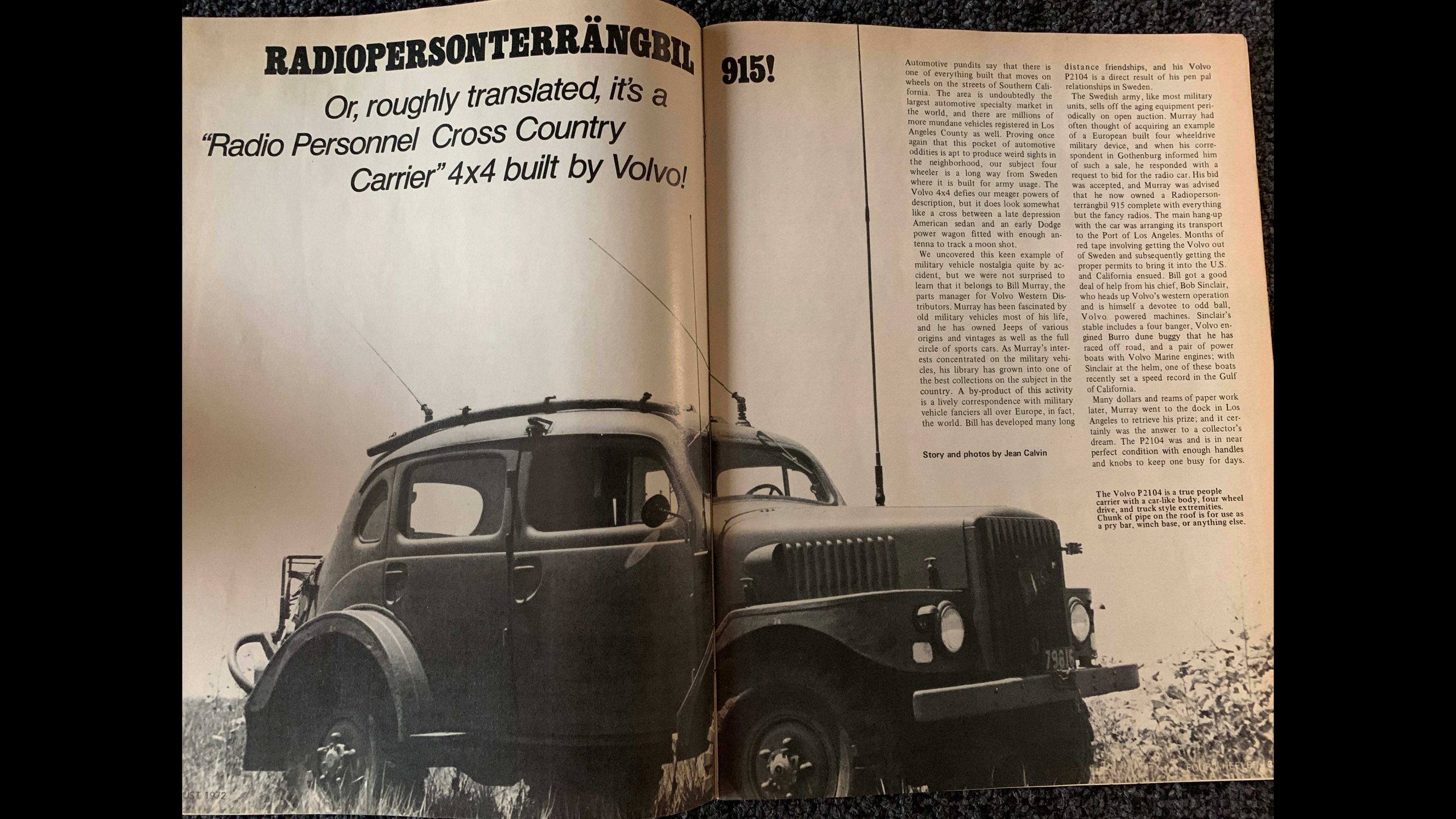
The Volvo Sugga is a military 4×4 designed to transport radio personnel and drive off-road.
When we first met the Volvo Sugga in 1972, we called it a “Volvo-powered, ex-military, taxi-inspired, cross between a late depression American sedan and an early Dodge Power Wagon fitted with enough antennae to track a moon shot.” Its real name is the Volvo Radiopersonterr ngbil 915, and the machine is the result of a tremendous amount of job-specific engineering done by the Swedish Army.
After 17 years of service in the military, this unit was decommissioned, put up for auction, and shuffled off to an enthusiast in the United States, who was glad to show us around their latest find. Its story begins during World War II when Volvo produced the Terr ngpersonvagn m/43 (TPV). Using parts that were cheap and quickly available from the Volvo Sharpnose LV101 light truck and the Volvo PV801 four-door taxi cab, engineers designed a vehicle vaguely suitable for light military tasks —towing, moving soldiers, and traveling off-road. Four-wheel drive was gained from a repurposed LV101 rear axle under the front of the TPV. These cars were known for being fiendishly uncomfortable to operate with meager off-road performance due to the small tires and long wheelbase. Many of the rear axles were also destroyed during duty because the rear differential lock actuator was located in the same place as the civilian parking brake, resulting in much confusion and destroyed parts.
In 1953, the TP21 was introduced as the TPV’s replacement with an engine upgrade, shorter wheelbase, stronger axles, and many task-specific accoutrements making it a far-superior machine for its duties. Powering the beast was a 3.67L, carbureted, side-valve, inline-six good for 90 horsepower. Both axles now sported well-marked vacuum-operated differential locks and the Volvo E9 gearbox sent power to a transfer case that could toggle between High and Low range, the latter being said to have enough grunt to drive the machine “straight up a tree.” The rounded, Power-Wagon-esque nature of the TPV and the subsequent TP21 led to its name “Suggan,” a term the Swedish use for “female pig” or “sow.” Now, the TP21 can be colloquially referred to as “The Sugga” (soo-guh).
With function at the core of the Volvo Sugga, the approach and departure angles are respectable, even the rear-mounted luggage/bicycle rack was high and close to the body. The tube seen mounted to the roof on the passenger side was used when the vehicle was parked and left running during radio transmissions. It was attached to the tailpipe, routing exhaust fumes away from passengers inside. Windows on the Sugga all had curtains to black out lights when transmitting at night. The Sugga’s dash featured a chain that when pulled, raised or lowered a similar curtain covering the radiator to maintain engine temperature in the winter. The rear of the Sugga comfortably housed a pair of radio operators and their equipment, aided by additional batteries and a generator.
A surprising number of the 720 Volvo Sugga TP21s produced have survived and many new owners have ousted the original powertrain in favor of bigger power figures. If you’re like us and dig old military 4x4s, let us know. Is there a machine you’ve always sought after in hopes of modifying or restoring? Was one of your past projects a rig that saw military service? We want to hear about it, and see your pictures. Send us a note editor@fourwheeler.com and be sure to attach a high-resolution image along with it!



